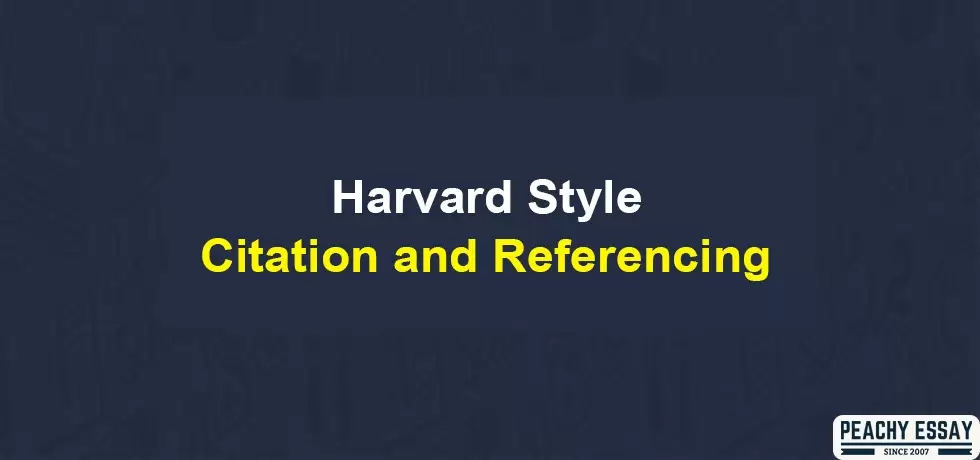
HARVARD CITATION
The Harvard citation style is widely used in academic writing, particularly in the sciences and social sciences. It follows an author-date system, where in-text citations provide brief details of the source, and full references are listed at the end of the document in a reference list. Here’s an overview of how to format both in-text citations and reference list entries in Harvard style.
1. In-Text Citations
In-text citations in Harvard style include the author's surname, the year of publication, and, if quoting directly or referring to a specific part of a source, the page number. These citations are placed in parentheses within the text.
Format:
- (Author's Last Name, Year, Page Number)
Examples:
-
For a paraphrase:
(Smith, 2020)
According to Smith (2020), technology has revolutionized modern education. -
For a direct quote:
(Smith, 2020, p. 45)
"The rise of technology has reshaped learning environments" (Smith, 2020, p. 45).
If a source has two authors, both names are included:
(Smith and Johnson, 2020)
For three or more authors, use the first author's surname followed by "et al.":
(Smith et al., 2020)
2. Reference List
The reference list is placed at the end of the document and includes full citations for all sources cited in the text. Entries are organized alphabetically by the author’s surname. Harvard style uses minimal capitalization for titles, and only the first word of the title and proper nouns are capitalized.
Examples for Different Sources:
Books:
In-text citation:
- (Smith, 2020)
Reference list entry:
- Format:
Author's Last Name, Initial(s). (Year) Title of the Book. Edition (if not the first). Place of Publication: Publisher.
Example:
Smith, J. (2020) Understanding modern technology. 2nd ed. New York: HarperCollins.
Journal Articles:
In-text citation:
- (Brown, 2019)
Reference list entry:
- Format:
Author's Last Name, Initial(s). (Year) 'Title of the article', Title of the Journal, Volume number(Issue number), Page range. DOI or URL (if available).
Example:
Brown, L. (2019) 'The influence of social media on mental health', Journal of Psychology, 12(3), pp. 34-45. https://doi.org/10.1234/jpsy.2019.234.
Websites:
In-text citation:
- (Johnson, 2022)
Reference list entry:
- Format:
Author's Last Name, Initial(s). (Year) Title of the webpage, Website Name. Available at: URL (Accessed: Date).
Example:
Johnson, P. (2022) The impact of climate change on agriculture, The Environmental Blog. Available at: https://www.environmentalblog.org/climate-change (Accessed: 15 July 2022).
Chapters in Edited Books:
In-text citation:
- (Roberts, 2021)
Reference list entry:
- Format:
Chapter Author's Last Name, Initial(s). (Year) 'Title of the chapter', in Editor's Last Name, Initial(s). (ed.) Title of the Book. Place of Publication: Publisher, Page range of the chapter.
Example:
Roberts, A. (2021) 'New advances in AI', in Green, P. (ed.) Technology and innovation in the 21st century. London: Tech Press, pp. 50-75.
3. Special Cases in Harvard Citation
- No Author: If a source has no author, the title moves to the first position in both the in-text citation and the reference list.
In-text citation:
(The impact of technology, 2020)
Reference list entry:
The impact of technology on education (2020) New York: Tech Publishers.
-
Multiple Authors: For sources with multiple authors, list all authors in the reference list, but for in-text citations of three or more authors, use the first author’s surname followed by “et al.”
-
Online Sources: When citing online sources, always provide a URL or DOI. Make sure to include the date you accessed the information in the reference list, especially if the content is likely to change.
4. Key Features of Harvard Style
- Author-Date System: Harvard citation uses a simple author-date system, making it easy for readers to locate references in the text.
- Alphabetical Order: The reference list is arranged alphabetically by the author’s surname.
- Minimal Title Capitalization: Titles of books, articles, and web pages are capitalized minimally, with only the first word and proper nouns capitalized.
- DOI/URL for Online Sources: Always include the DOI (Digital Object Identifier) or URL for online sources, along with the date accessed if applicable.
5. Why Use Harvard Citation?
Harvard citation is clear, concise, and straightforward, which makes it one of the most commonly used citation styles in academic writing. It ensures that readers can easily track the sources used, and it emphasizes the importance of giving credit to original ideas and research.
By consistently using Harvard style, you help maintain the integrity of academic work, allowing readers to locate your sources and verify your research.